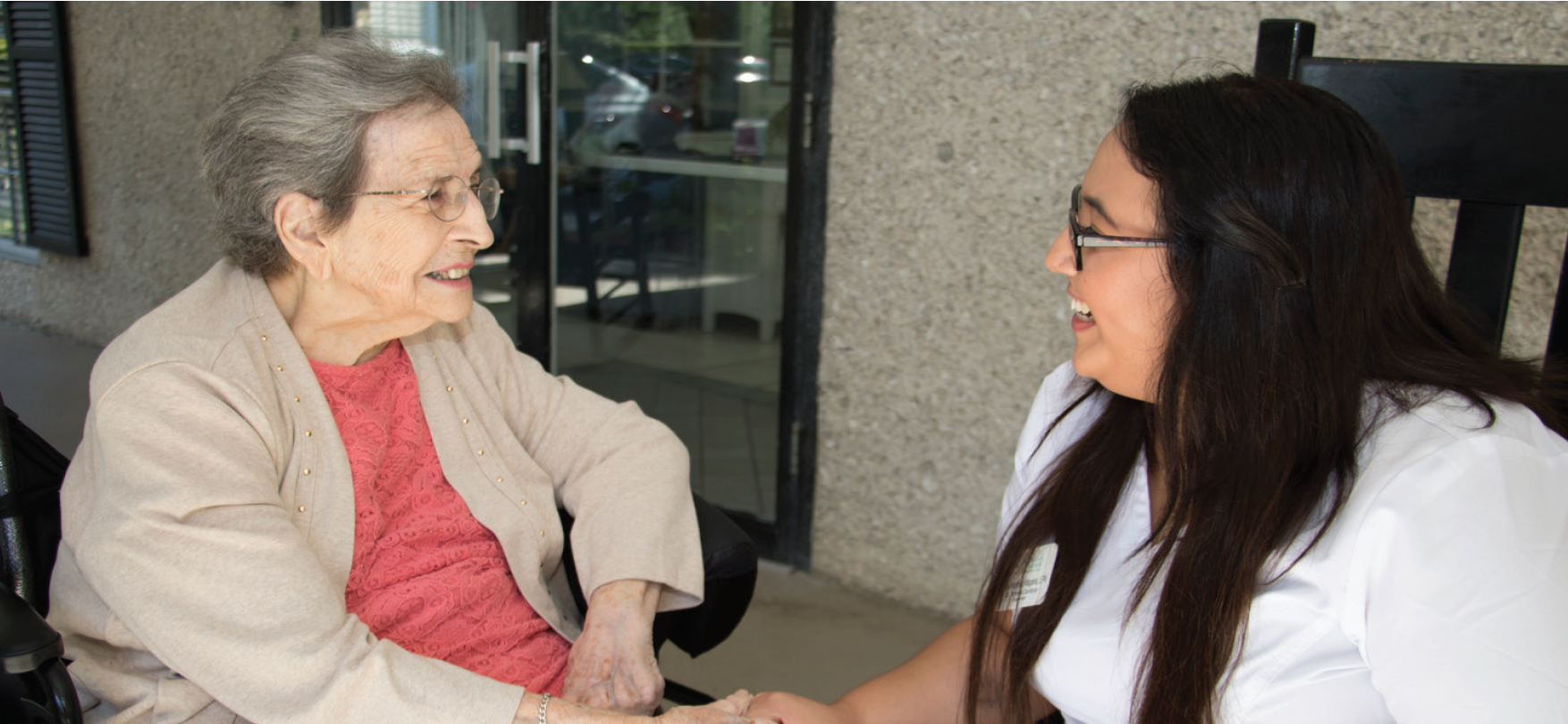The Process of Moving into a Senior Living Community
Don't have time to read this now? Download a pdf version instead.
Introduction
Here at Magnolia Manor, we know that this is often an emotional time. You’ve made a big decision, and let us be the first to wish you a hearty Congratulations!
You’ve earned the right to live less stressfully. Relax and enjoy these years, and let your senior living community take care of the small details for you.
The purpose of this guide is to help make the process of moving into a senior living community as easy and seamless as possible. From submitting your application to the first few weeks after you move in, we’ll walk you through the steps we recommend for an easy and stress-free move-in. We’ve been assisting residents with their moves since 1963, so we have quite a bit of experience!
We hope this guide will help you every step of the way. If you haven’t yet made a decision about moving and would like to speak to a member of our team or schedule a tour, we’d love to hear from you. We have eight (9) campuses across southern Georgia and a family of staff and residents who will welcome you with open arms. Call us today to speak with a member of our team.
Picking The Date
Application
To really get started, we should go a step back before even picking the date. The very first step for moving into your senior living community is completing your application.
By this point, you’ve probably visited multiple campuses and have decided which one is the best fit for you. You’re ready to sign on the dotted line - congratulations! The next step is to complete an application. In many instances, there is an application fee that goes along with this step in the process.
Here at Magnolia Manor, our application fees or deposits vary by campus, but are deliberately very reasonable for residents. We understand that there are a range of costs and financial burdens that can come with a decision to move into senior living. In fact, some of our campuses don’t actually have application fees or deposits. They simply require the first month’s rent in advance. In other cases, a $500 deposit may be required; however, that is later applied to your first month’s rent.
This amount and responsibility may impact your ability to choose a move-in date, so it’s important to clarify what fees may be due at the time you submit your application.
Physician’s Medical Evaluation
Along with your application, one of the first steps you’ll need to complete before moving in is the submission of a physician’s medical evaluation form. This form is mandated by Georgia Health Care Facility Regulations and must be submitted to your senior living campus no more than 30 days prior to your move in.
Your administrator will need to review this form before you can move in or even set a date to move in, so once you’ve decided where you want to live, we recommend making an immediate appointment with your general care physician to have the form completed and submitted.
Waiting Lists
In some instances, senior living campuses will have immediate vacancies, and you can follow through with your deposit and physician form quickly. But also quite often you may be added to a waiting list.
It may take months or even years to make your way to the top of a waiting list. The name “waiting” is most definitely appropriate! Because the length and circumstances of waiting lists can vary widely, advanced planning for senior living is imperative. One important thing to note about waiting lists: at least here at Magnolia Manor, your application will expire after a year. Not to worry: a member of the Magnolia Manor team will reach out to you as the date nears so you can remain on the waiting list, if you want to!
At Magnolia Manor, we frequently meet with families who are in extreme emergency circumstances and require immediate senior living options for their loved ones. It is heartbreaking for us when we are unable to accommodate those needs due to a waiting list.
The easiest and best way to prevent these circumstances is to have important discussions in advance to determine when senior living is the best choice. Then, it’s important to research campuses and make your decision; so if the situation requires your addition to a waiting list, you are able to wait and ensure your senior living community wasn’t chosen in haste. In other words -- you’re able to make the right choice for YOU! It’s also important to realize that the time to decide to make the move is BEFORE you “must” make the move!
For more on choosing the right senior living option for you or a loved one, we invite you to download our additional guide, How to Choose a Retirement Community.
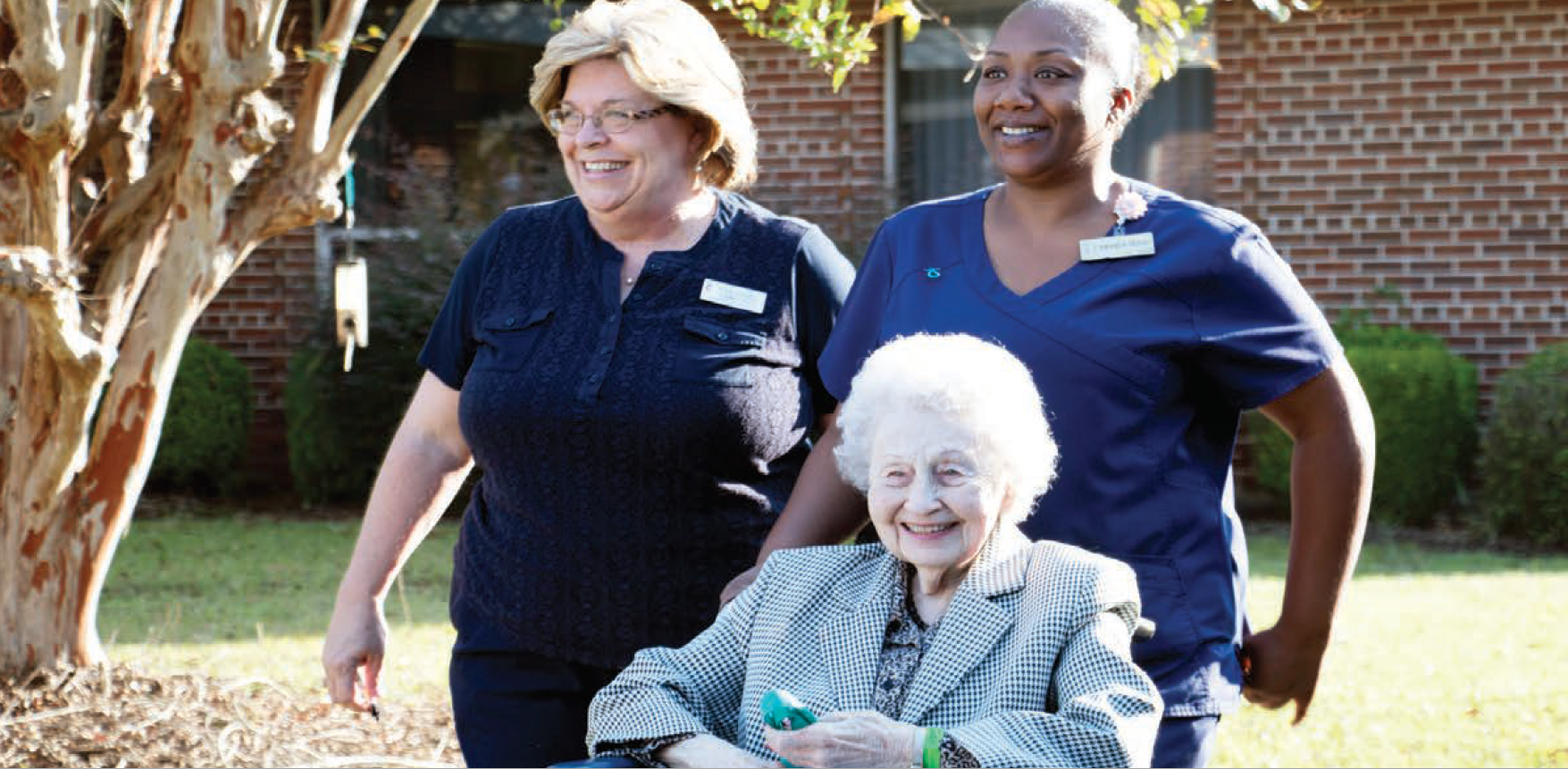
Before The Move
Getting Your House Ready to Sell
There are several facets of getting your house ready when moving into senior living. For some residents, perhaps you’ve already moved into an apartment and have gone through the process of downsizing and selling your home. In those instances, the process of moving into senior living may be a bit easier. Still, you may need to consolidate your belongings a bit further.
But for many other residents, there are logistics involved when preparing your home and getting ready to move into senior living. It’s often nearly impossible to time the sale of your house to the day you move into your retirement community.
Our team at Magnolia Manor typically recommends beginning the process of preparing your home for the move as soon as you’ve decided to move into senior living. Selling a home can be a long process, and the earlier you begin that process, the less likely you are to have any stress about it as you prepare for the big day so you can enjoy your new home.
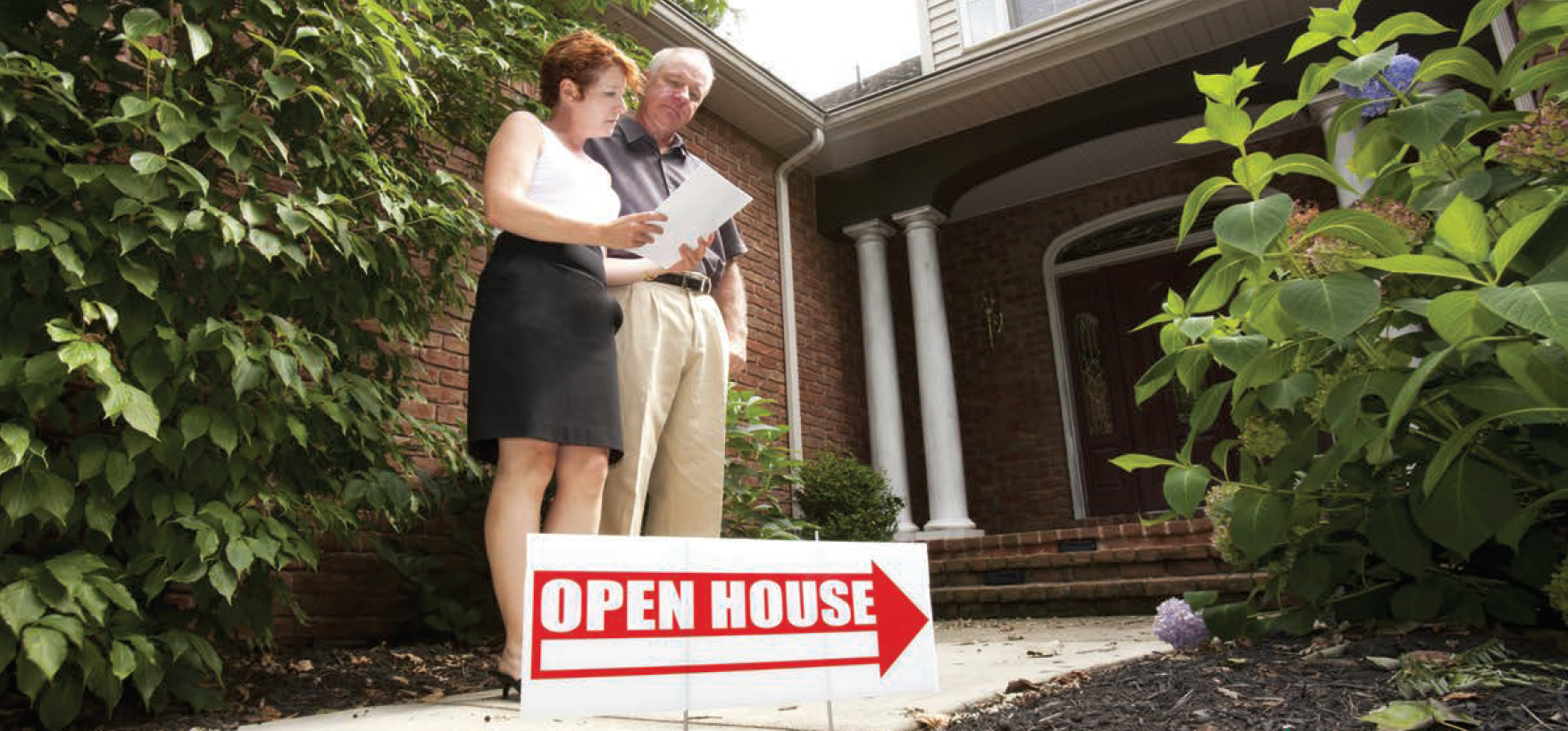
Going Through Belongings
The thought of sorting through belongings and parting ways with some of them can be a painful reality for many seniors. This is an understandably emotional part of the process for many residents!
Deciding on Furniture
Depending on your specific choice for senior living, you may be able to bring furniture with you into your new residence. But, the dimensions and amount of furniture you’re able to bring will likely vary widely based on the specific senior living community, your choice of residence size, and more.
>Here at Magnolia Manor, we’re currently developing an online tool that will allow you to choose from thousands of furniture icons -- including chaise lounges, recliners, dressers, dining tables, sofas, and much more -- and place them into your specific residence type. You’ll be able to move them around and see what pieces of furniture and what layout of that furniture will work best in your new home. Imagine how much easier that will make the move-in process!
What to give to family
A lifetime of possessions and the memories associated with each item often fill a home, so in many cases moving into senior living requires a bit of downsizing. This is often one of the most difficult steps residents take.
It’s okay to feel emotional. Anyone would feel emotional in the same situation!
We recommend you begin sorting through your belongings as soon as you’ve made the decision to move. At a minimum, allow yourself a few months to go through the process, if time allows.
With some pieces of furniture, you may have had them in your home or within your family for many years or even decades. Parting with those pieces can be incredibly difficult. One recommendation we make quite often to residents who are having difficulty parting with furniture pieces is to give them away to family (more on that in the following pages!). The cost of a storage facility can add up quickly; and really, how much comfort and joy would your furniture be giving you in storage?
Rather than try to tackle your home at one time, consider starting in one room, or even one dresser/bureau or closet. It can be overwhelming to go through so many items at once!
If you can, take your time sorting through your belongings. Enjoy recalling the memories and thinking about the history that is attached to some of those objects.
As a first step, one of the easiest ways to downsize is to consider what pieces to give as gifts to family. In some cases, your family members may have put “claims” on some of your belongings years ago (in some families, this happens a lot with children!). Or you may have been thinking about leaving certain items to specific family members after you pass away.
Why not let them enjoy those items now? Then you can actually enjoy giving it away!
But if you haven’t already decided what items may go to whom, or if you don’t know which items are really desired by family members, what better way to celebrate your possessions and enjoy your family than to invite them over for a “Paring Down Party?”
One thing to keep in mind when giving items away to family: They may not want everything. In fact, your family members are probably dealing with their own clutter! Try not to take offense if your family isn’t clamoring to own all of your items. There are other options for downsizing your things once family has decided which items are best passed down.
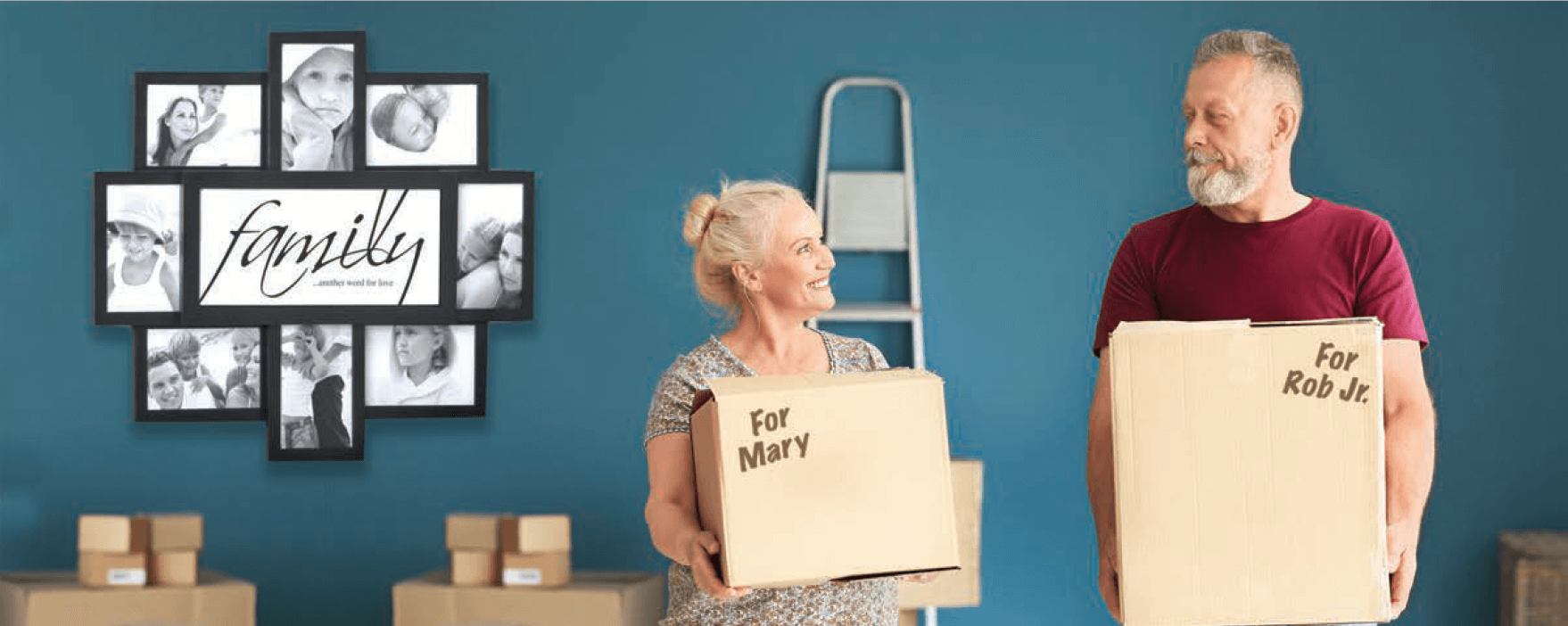
What to donate
Once family has chosen from among your possessions, you may consider a yard sale or donating remaining items. Items that are particularly in need for donation include furniture, clothing, blankets, and other necessities that can help needy families and individuals who have fallen on hard times. What a wonderful legacy for your belongings to help someone in need!
If you’re worried about how you will transport any items you decide to donate, there are quite a few options that can alleviate the entire burden of donating:
The Salvation Army - In many cases, the Salvation Army will schedule a donation pickup at your home. To schedule a pickup, simply complete the form on this website and a member of the Salvation Army team will contact you to set the details.
Donation Town - This website will connect you to charities in your area that will pick up your donations. A “one-stop shop” of sorts to make the process a bit easier. This link will take you directly to resources here in Georgia.
What to throw away
In some cases, this may be the hardest step of all. You’ll likely be throwing away at least some of your possessions. Perhaps they are too worn out for someone else to enjoy, there are parts missing, or an item is broken. In those instances, throwing away items makes sense.
Do you really need it?
Are you having difficulty deciding what items you must keep, what to give away or donate, and especially what to throw away? It can be helpful to invite over friends or children to provide input and emotional support while sorting through possessions. And some of that support may be helping you realize when it no longer makes sense to keep an item. When sorting through possessions, it can sometimes be difficult to distinguish between items you care about and that have memories, and items you actually need. An outside perspective can help you make that important distinction -- and ultimately save you from moving unnecessary items into senior living. One way to help ease the burden of giving or throwing away possessions is by taking photographs of those items. Digital photo frames are a lovely gift from family and friends and can be loaded with pictures of some of your treasures.
In fact, printed photographs themselves are some of the items you may be struggling to throw or give away. One way to alleviate the emotional stress of losing your photographs is to host a photo scanning party with family or friends. Task one of your family members to bring a photo scanner (many families own one, or even have advanced scanning capabilities on their mobile phone or printer), then, enjoy laughing and reminiscing together as you scan those images together.
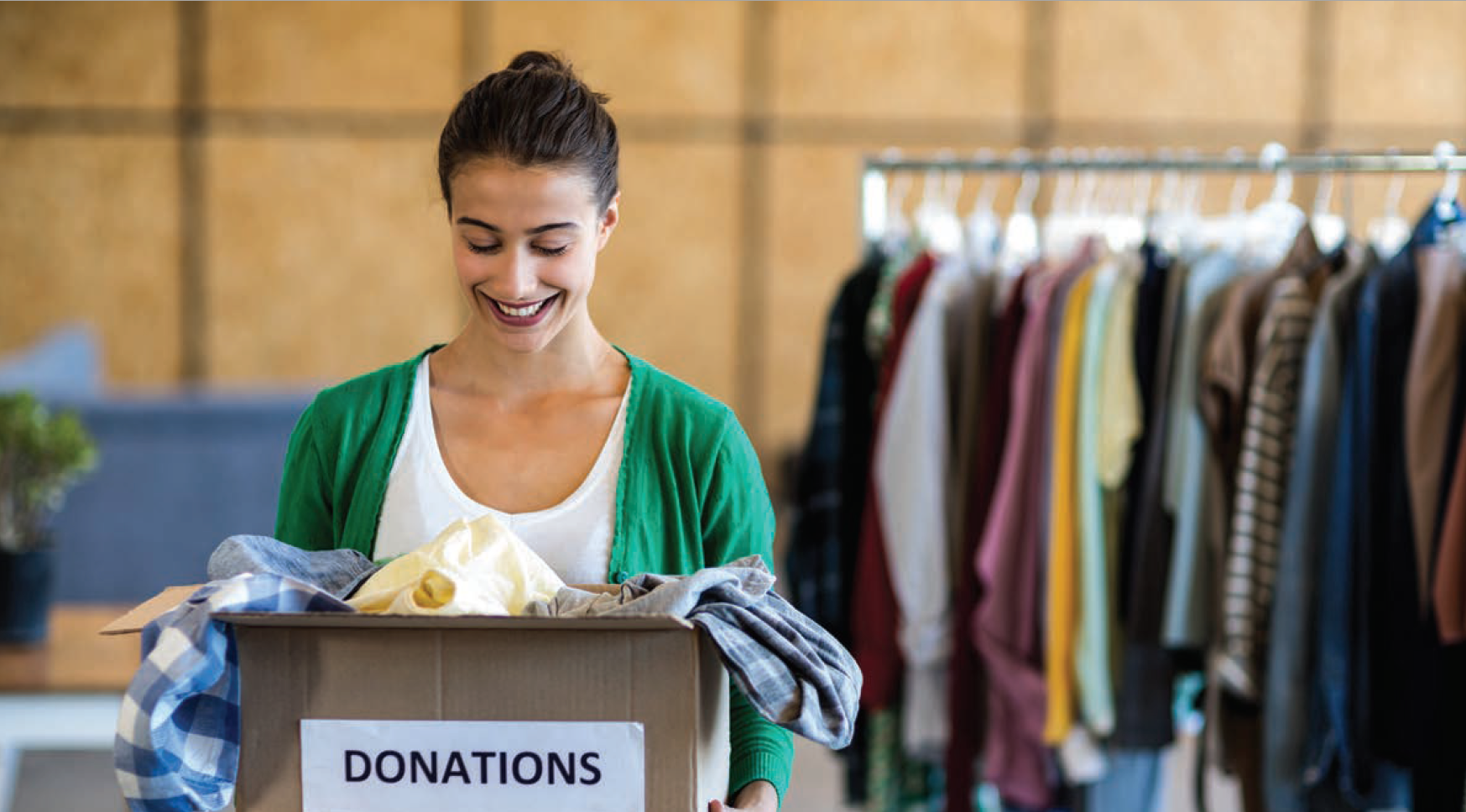
Emotional Preparation
We’ve touched upon this several times already, but emotionally preparing for your move is an important part of moving into senior living. It’s important to acknowledge that your emotions are completely normal. You should be feeling a range of emotions. This is an exciting time; a time of change. And with change comes some reflection and difficulty. This change, however, brings with it the joy of new beginnings, new friendships, and a life that takes care of small details so you simply don’t have to anymore.
Talking through the many emotions you’re feeling can help in dealing with this transitional time. Our staff here at Magnolia Manor has provided comfort to many residents while preparing to move into one of our campuses. In fact, our chaplains are always available to meet with new residents and help them through the emotions of their move.
In some instances, however, speaking to a professional can help with the emotional stress of this transition. Don’t be afraid to talk to a therapist or doctor about your feelings.

Making a Checklist
One of the best ways to organize your thoughts and steps before moving into your new community is to prepare a checklist. Having a go-to printed resource on hand to refer to throughout the move-in process can help bring organization to a pretty busy and sometimes even hectic time.
Your checklist will be unique to your own situation and move. However, in addition to the items mentioned above, here are some elements we often see residents include on their lists:
- Mail or fax your physician medical evaluation
- Schedule an assessment meeting with an administrator
- Identify your truly most cherished possessions
- Create or print a floor plan layout of your new residence
- Sort items by their final destination (senior living, family, friends, donation, or trash)
- Determine your move-in date
- Determine your move-in team
- Change your mailing address with the post office
- Update your address and/or phone number with doctor’s offices
- Cancel your cable, newspaper and utilities
- Send a change of address to your magazine subscriptions, banks, and family and friends
- Pack and label boxes
Communication With Your Senior Living Community
Once your date is set and you’ve prepared for your move, you may be tempted to move your items a few at a time to ease the burden of one, large move. Or perhaps your children or grandchildren will be in town on certain dates to help you with your move.
In these instances, communicating with the admissions counselor from your retirement community is essential. They will ensure that your campus is ready for your arrival, and that you can be assisted wherever necessary during the process. Be aware, though, that because of liability reasons, most communities don’t allow you to move your belongings until you’ve signed an agreement and paid your first month’s rent.
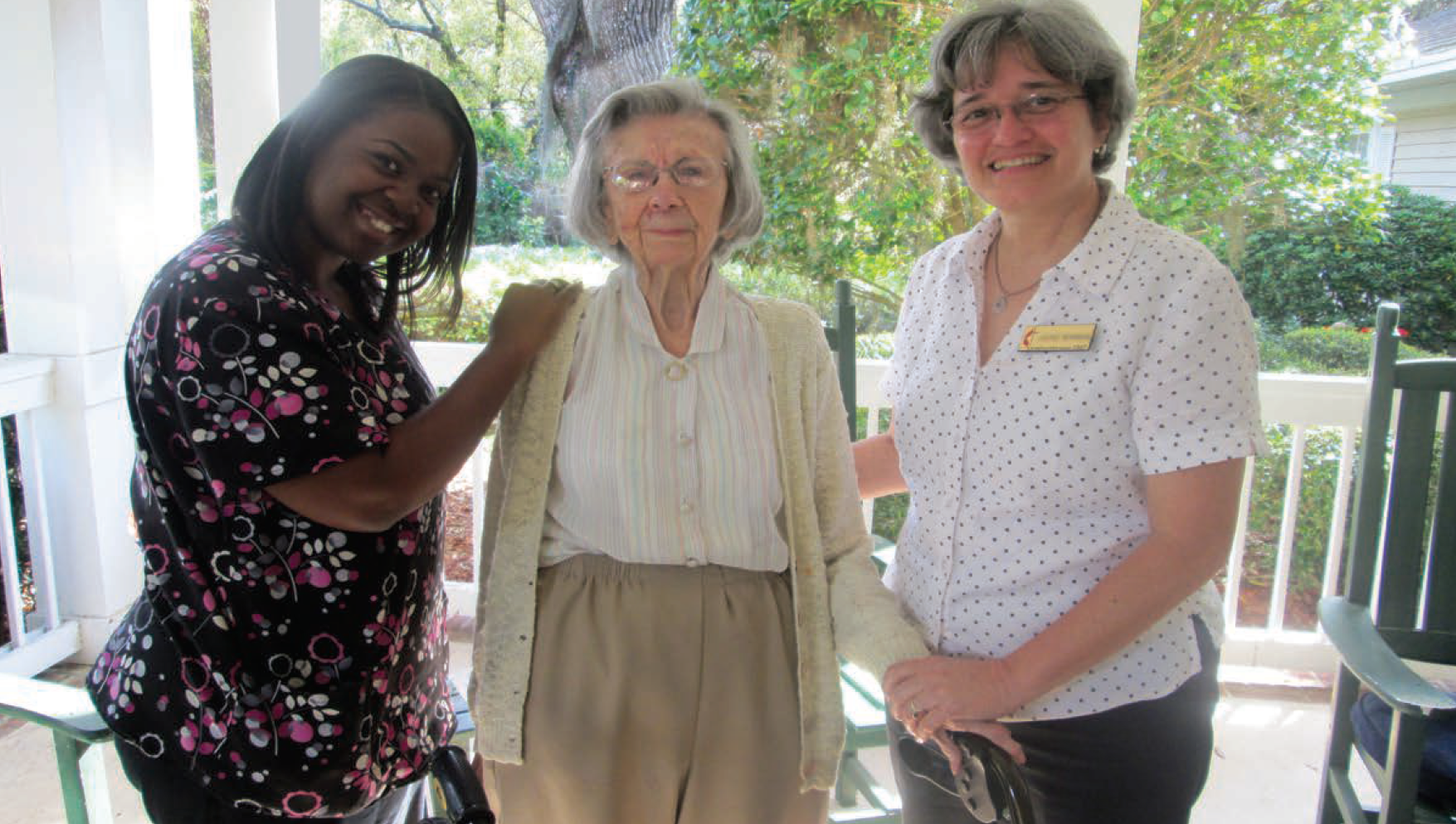
Prepare a “First Night” Box
While you’re packing and preparing for your move, prepare a “first-night” box or bag that contains the essentials you’ll need for your first night in your new home. With all the action of moving, you may not have the energy (or the desire!) to unpack everything right away.
Packing a “first-night” box or bag ensures you have all of your essentials with you and at close access so you’re comfortable during your first night. Here are some items to consider including in this box:
- All of your medications
- A toothbrush and toothpaste (or denture-cleaning supplies)
- One or more fresh changes of clothes
- Pair of pajamas
- A hairbrush
- A towel and washcloth
- Clean sheets
- Your favorite pillow
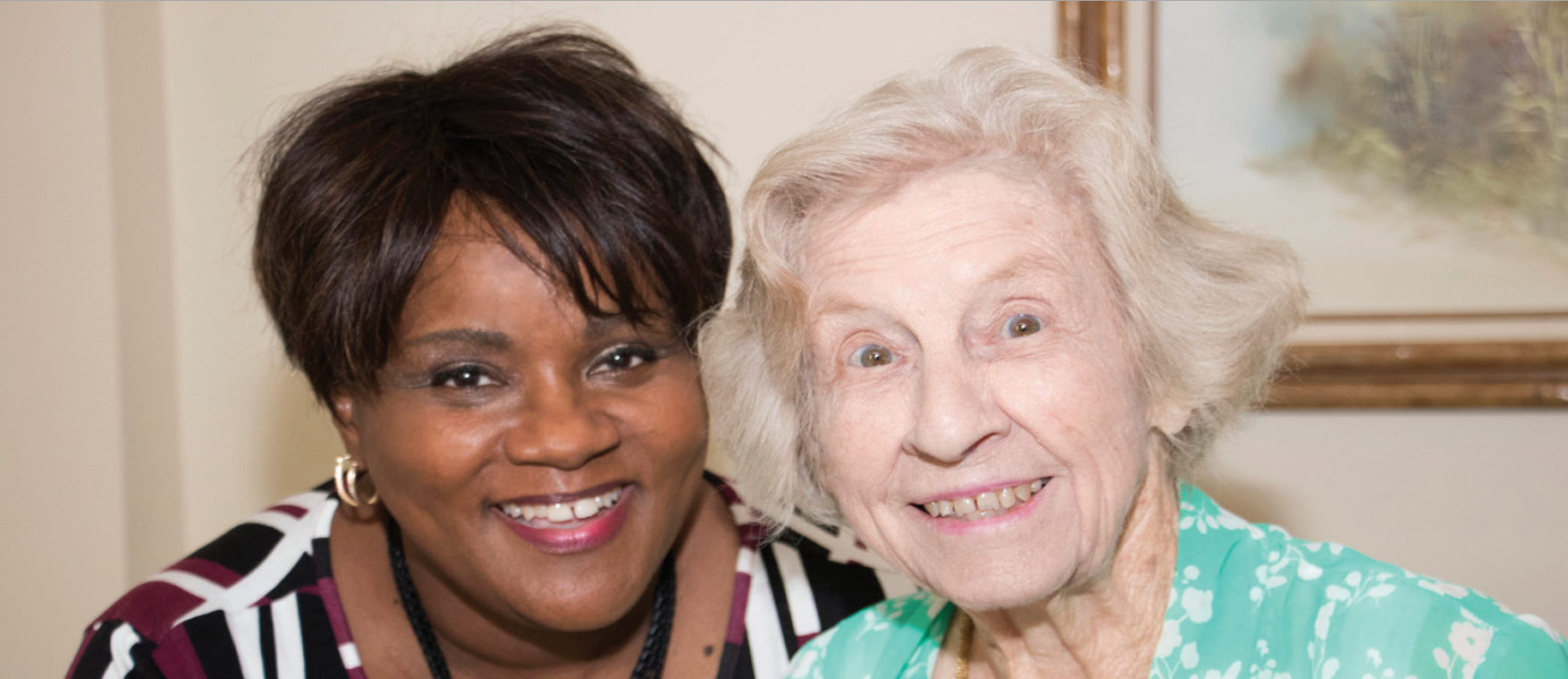
The Big Day Of Your Move
Communicating With Your Point of Contact Person
Communication with your retirement community between the day you submit your application and the day you move in is essential. But the day you move in, you will most likely be in constant contact with the community team member who has helped you throughout the process.
REMEMBER: Your physician medical evaluation form must be submitted no more than 30 days before your move-in date. Here at Magnolia Manor, we will remind you and ensure that your form has been submitted with more than enough time. Contact your senior living community to verify their process.
Your point of contact will coordinate with the nurses, administrators, and other key staff at your senior living community to let them know when you’ll be moving in and when you may want to start exploring your new home.
At Magnolia Manor, in many cases, your point of contact becomes like a member of your family. Our team takes pride in helping our residents at such an important time in their lives. They will be with you from the moment you first tour one of our campuses to the day you move in, and even afterward. They understand what it’s like to feel a bit like a fish out of water. We go above and beyond to try and limit that feeling as much as possible so you become quickly acclimated to your new home.
Coordinating Your Move-In Team
Your move-in team is the group of people who will actually be helping you move yourself and your belongings into your new home. As soon as you have a move-in date, it’s important to determine who will be helping you -- both on the “big day,” and if you will be moving any items at an earlier time.
Some common people residents include on their move-in teams include:
- Children and their spouses
- Grandchildren
- Professional movers
- Friends or children of friends
- Current neighbors
In reality, there is more than one “move” on the big day -- you are moving everything OUT of your previous home and into your new home. It’s essentially two full moves! Although the last member on the list, current neighbors, may seem out of place, in some cases your current neighbors might be willing to help you move your belongings out of your old home and into a moving truck or van.
If you’re looking for the simplest option available and have room in your budget, there are some moving companies that will not only take care of loading up the moving truck or van and unloading it at your new home -- they’ll even box up your belongings for you! That is the definition of a hassle-free move, but it certainly comes with a cost.
Extra help from your senior living community
Although every senior living campus is different, here at Magnolia Manor your point of contact will be there with you on the big day. He or she is always happy to assist with the move-in and help you in any way possible!
In some cases, our maintenance staff may be able to provide limited assistance with moving furniture or hanging pictures on the walls. Although your family is happy to help, they don’t have to do everything. The Magnolia Manor team tries to help our residents whenever possible on move-in day. In fact, we also might be able to recommend someone who can provide a little extra help filling out their move-in team. Contact your senior living community for details on their available assistance.
Admissions Meeting
There are some administrative tasks that come along with the big day, although at least here at Magnolia Manor they don’t take long!
During your admissions meeting, we’ll ask you to complete or provide some paperwork, including the following:
- A living will
- An advance directive
- A list of your medications
- Emergency contacts
- The type of car you drive (if applicable)
- And other items for your health and safety
Some of these items are mandated by the State of Georgia, while others will be specific to your senior living community. If you are concerned about being prepared for the admissions meeting on the day of your move, talk to your point of contact. He or she will be happy to give you a list of the paperwork so you can prepare any necessary items in advance.

Meeting With the Chaplain
Here at Magnolia Manor, we are a non-profit, faith-based senior living organization that operates in the Methodist tradition. However, we are committed to meeting the spiritual needs of ALL our residents.
As part of that commitment, we encourage all new residents to meet with our campus chaplain. Each of our eight campuses has its own chaplain who is experienced in helping seniors make the transition from living on their own into senior living. It can be an emotional and even difficult time, and our chaplains can help you work through any difficulties. This is an important life change for you!
Although Magnolia Manor is rooted in the Methodist tradition, in fact, a majority of our residents are not Methodist! Our Chaplains are committed to helping our residents along their faith journey and will take the time to understand what is most important to every resident.
 For many new residents, their Magnolia Manor campus may be in a new neighborhood with unfamiliar church parishes. That’s why soon after you’ve moved in, your campus Chaplain will be available to connect you with a local priest or minister to nurture your faith journey. Keep reading for more about our commitment to your specific faith.
For many new residents, their Magnolia Manor campus may be in a new neighborhood with unfamiliar church parishes. That’s why soon after you’ve moved in, your campus Chaplain will be available to connect you with a local priest or minister to nurture your faith journey. Keep reading for more about our commitment to your specific faith.
First Few Weeks In Your New Home
Set Your Own Pace
While you may have considered all the activities of your new senior living community when making your decision, there is no rule that states you have to participate in everything from the moment you move in.
In fact, it’s important that you set your own pace once you’ve moved into your new home. This time is an emotional one, and getting used to an entirely new home and way of life takes time.
At Magnolia Manor, we respect the transition between your old home and your new home in senior living. For some residents, easing that transition means getting involved right away, going to activities and meeting your neighbors. For others, it means spending time in your new residence and getting used to your surroundings before venturing out much.
Either choice is okay. Do what’s best for you!
Getting Used to Senior Living
Life in a senior living community is very different than life alone in your own home. Here are just a few ways life in your new retirement community will be different.
Life on a schedule.
Keeping things running in a bustling senior living community with hundreds of residents is no small feat! To make things as easy as possible for our residents and ensure they are accessible to everyone, many aspects of life here at Magnolia Manor run on a schedule. This can take some getting used to!
In particular, eating meals at specific times is a major adjustment for many residents. Don’t worry, you’ll get used to it quickly!
With a robust schedule of activities including music, arts and crafts, plus a range of spiritual and exercise activities to meet your needs, our eight Magnolia Manor campuses seem to always have something on the calendar.
While adjusting to some elements of life on a schedule can take some time, most of our residents find it to be a quick and painless tradition. In fact, many appreciate the consistency (along with flexibility at times when they’re in the mood to change things up).
Someone to do the chores for you.
After spending decades taking care of a spouse, children, and grandchildren, having someone else take care of chores for you may seem like a dream.
Thankfully, it’s not a dream at all -- it’s a major benefit and part of life in senior living!
This is one of those details that may seem small, but that makes a huge impact on your day-to-day life. At Magnolia Manor, from our maintenance team handling repairs to our housekeeping and laundry services, the days of lifting a finger to work yourself to the bone are over.
While the benefits of having someone do the work for you are readily apparent, there is also some preparation and adjustment involved. For instance, if your new home offers this benefit, having someone else take care of washing your clothing and undergarments may take some getting used to!
Another element to consider is that chores like preparing the laundry, and housekeeping are also on a schedule. So in addition to meals and activities, these elements will be structured. Many residents find this helpful, as it means they can relax knowing when things will be regularly taken care of (and by whom).
Everything you need in one place.
In independent senior living, you will have the freedom to come and go as you please. But, don’t misunderstand that as meaning you will have to run frequent errands all over town like you did in the past.
In senior living, you don’t have to worry about spending hours fending off lines at the grocery store or sitting in traffic. At Magnolia Manor, besides providing meals, most of our campuses have an on-site barber/beauty shop, access to medical care, and shuttles to local shopping. Our on-site chaplains and church services meet your spiritual needs right on campus, and our wellness center gives you a place to exercise and stay healthy.
It can be an adjustment to know your new home has just about everything you need in one place, but this is one that makes our residents incredibly happy:
Not having to worry about the little things!
When we own homes, our minds are constantly cluttered with small details.
What time should I start preparing supper?
Who’ll mow the lawn?
Did I pay the utility bill?
What happens if the water heater breaks?
And so much more.
Quieting those voices that have invaded our minds for decades can take an adjustment. The peace of mind in knowing that you don’t have to worry about those things can be incredible.
But it really is an adjustment. During the first few weeks after you move in, you may find yourself reaching for the phone to schedule lawn maintenance or a ride to your doctor. In time, however, your mind will relax knowing that the small details are no longer something that needs to weigh you down.
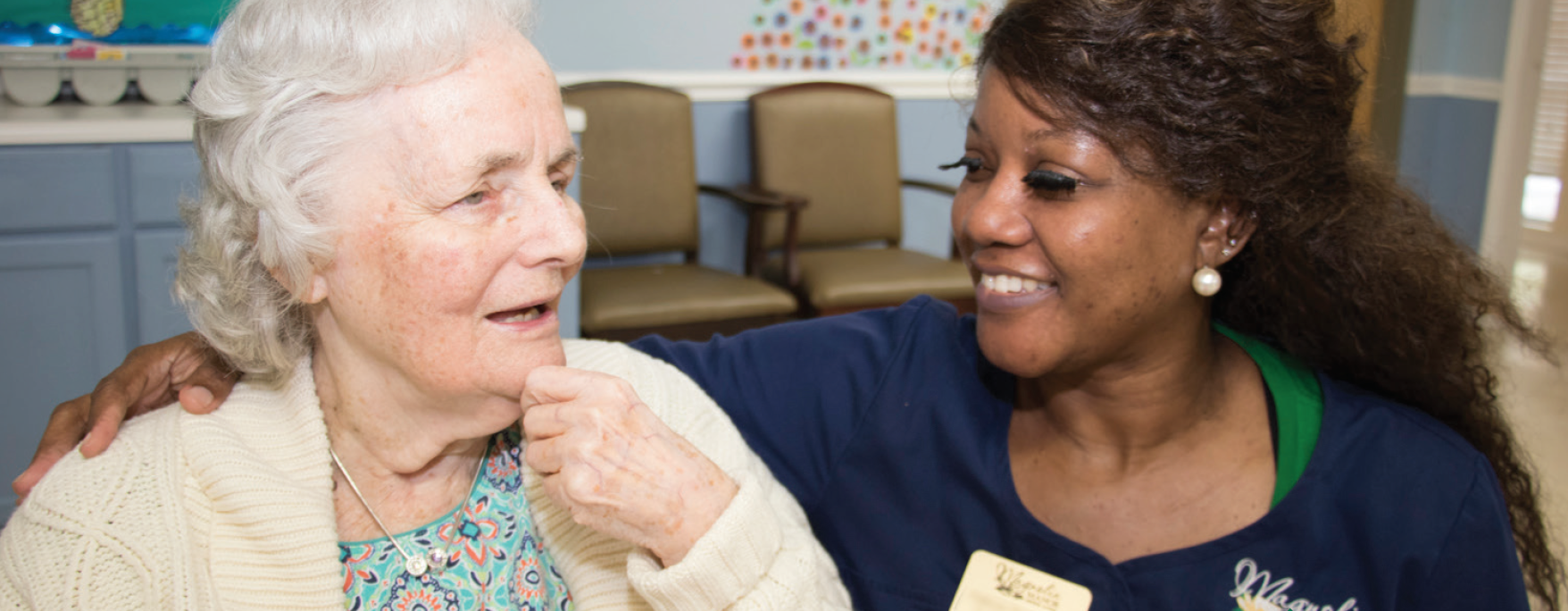
Introductions to Neighbors and Key Staff
It can be a bit overwhelming not only to move into a new home, but to meet so many new people! First of all, it’s important to mention no one will expect you to remember the name of every new person you meet in those first few days and weeks.
Within the first few days after your move-in (at your own pace), your point of contact can introduce you to some of your neighbors, as well as key staff in your community. In particular, the key staff members will be people you’ll count on when you have needs or questions. Don’t feel like you have to wait for an introduction, though. If you’re eager to get out and explore your new community, feel free to meet and introduce yourself to as many people as you’d like!
Keeping in Touch
Your point of contact has been your go-to resource and friend throughout the process -- he or she won’t be disappearing after you’ve moved into your senior living community. At Magnolia Manor, our salespeople can regularly check in with you during your first few weeks to be sure you are doing well and that your needs are being met.
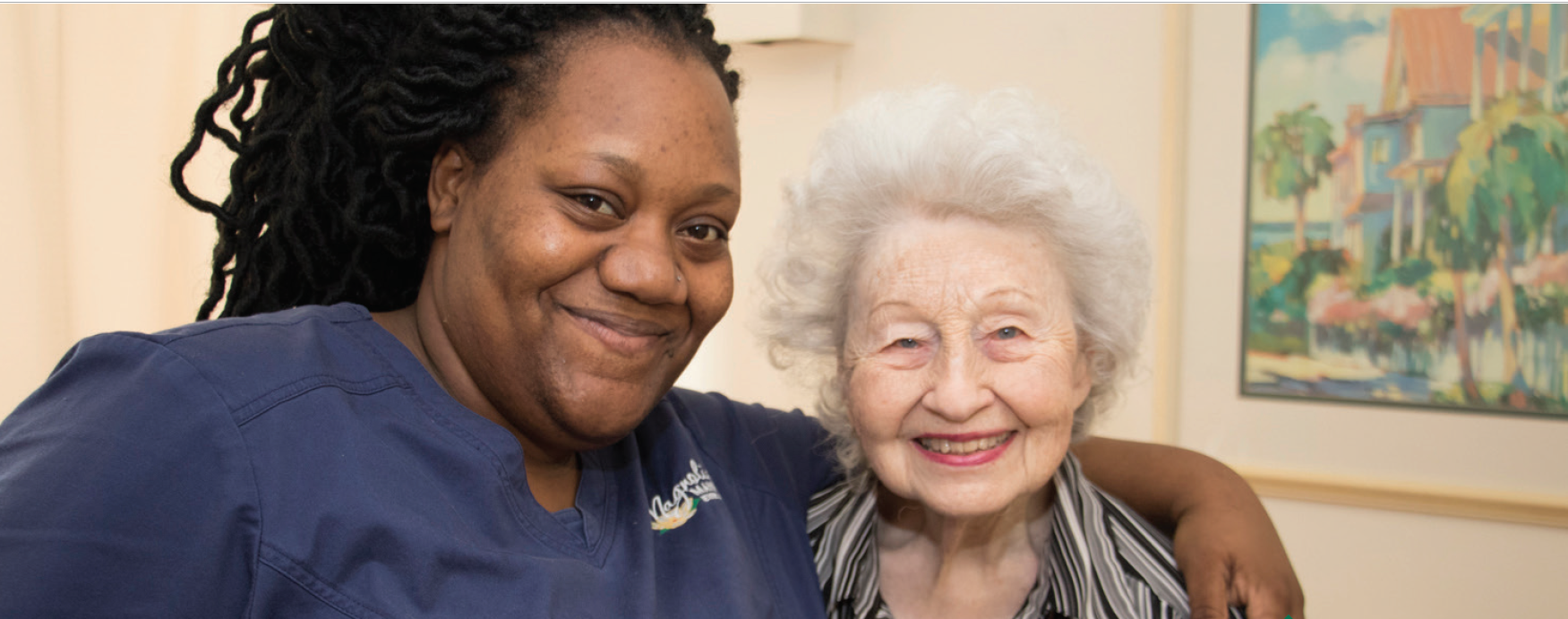
Welcome To Your New Home
Once again, all of us at Magnolia Manor would like to congratulate you on your move into senior living. Although this next chapter of your life may initially take a little adjustment, the benefits of senior living are sure to make a major impact on your quality of life.
Here at Magnolia Manor, our team goes to great lengths to make the process of moving into your new home as easy as possible. That’s only the beginning.
We strive to meet your physical, emotional, social, and spiritual needs, and have a robust set of activities, services, and amenities to help you live your best life.
We offer independent living, assisted living, memory care, rehabilitation, skilled nursing, and supportive housing options across our eight campuses in South Georgia. If you haven’t yet decided upon a senior living community, we welcome the opportunity to meet with you, give you a tour, sample a delicious meal, and answer your questions. Call us today at 1-855-540-LIFE (5433) to speak with a member of our team.
